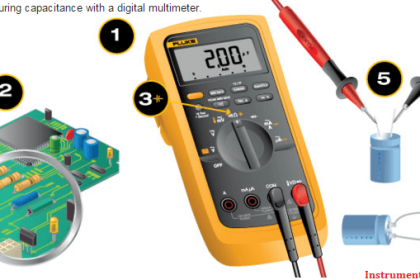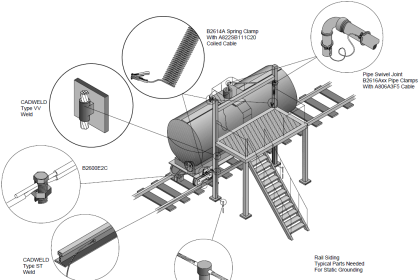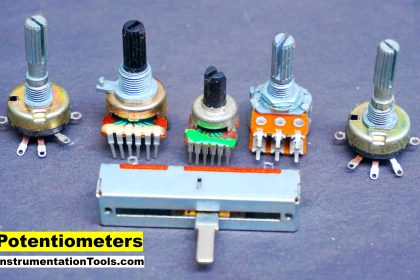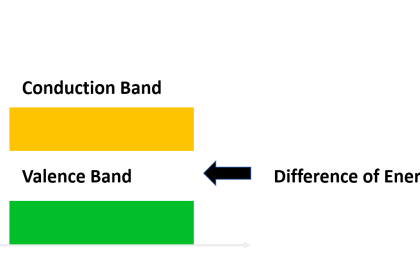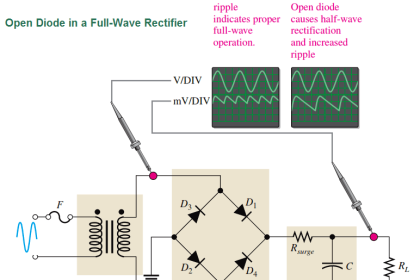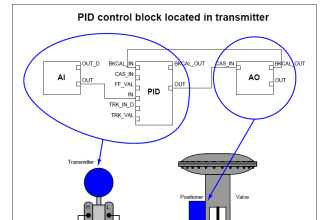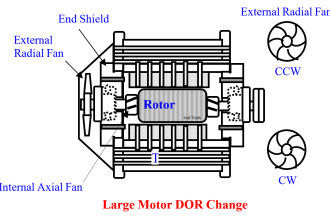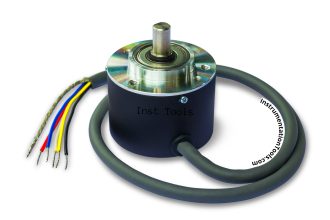
1. What is a fuse?
The fuse is an electric element protecting electric devices. It is commonly connected with a circuit in series, and when fault current increases to a certain value, the fuse blows out to cut off the circuit so as to fulfill an aim of protecting other equipment in the circuit. The fuse is the most commonly used component in a over-current protection circuit.
The traditional fuse mainly consists of two parts of a tube body, of which both ends have metal connecting terminals, and metal melt in the tube body. The majority of fuses are cylinder-shaped, namely cartridge construction. But nowadays, with the fast development of advanced technology, some special materials are well applied, the fuse industry has started to move forward in the direction of sub-miniature products and a series of new products such as Surface Mounted Devices type fuse are successively developed.
2. Fuse’s function
a. The fuse can bear overload in a certain range when current fluctuation occurs because of power supply or external interference;
b. When bigger overload current appears in the circuit, the fuse should cut off the circuit in the set time so as to protect other electric parts in the circuit ;
c. When very big current appears because of short circuit, the fuse can safely cut off the circuit so as to avoid damage by overload current .
3. Technical parameter term
a. Rated current: Normally the rated current value is: 100mA, 160mA,200mA, 315mA, 400mA, 500mA, 630mA, 800mA, 1A, 1.6A, 2A, 2.5A, 3.15A, 4A, 5A, 6.3A, etc. ;
b. Rated voltage: Normally the rated voltage value is: 24V, 32V, 63V, 125V, 250V, etc. The fuse can be used at the voltage less than or equal to its rated voltage, but normally can’t be used at the voltage is more than its rated voltage ;
c. Voltage drop: The fuse is operated at the rated current, when the fuse reaches heat balance, namely the temperature is stabilized, the voltage difference measured at both ends of the fuse is voltage drop. Because the voltage drop has certainly influence on the circuit, the voltage drop is clearly regulated in the European standard, but not defined in the American standard ;
d. Overload current: The overload current refers to the current which is higher than that when the circuit normally works. If the overload can’t be cut off in time, it is quite possible that electric parts in the circuit are damaged. The short circuit current refers to the current generated because of partial or whole short circuit, and normally is very high, much higher than the overload current ;
e. Fusing characteristic: Namely time-current characteristic. Normally, the fusing characteristic is expressed in two ways: I-T diagram and test report. The I-T diagram is a curve formed by connecting average operating time point of the fuse under different current loads in a coordinate system in which the overload current is X coordinate and the operating time is Y coordinate. Each fuse model has a corresponding curve representing its fusing character. While selecting fuses, you can refer to the curve. The test report is the test data record obtained by finishing the test items required by the standard ;
f. Interrupting rating: Also called as rated short circuit capacity, namely, at the rated voltage, the maximum current value (effective value for AC) at which the fuse can safely cut off the circuit. The interrupting rating is an important safety parameter to the fuse ;
g. Melting heat energy value: Namely the heat energy value needed for melting the fuse, its code is I² t. The melting heat energy value is the product of the square of corresponding current when the fuse blows out in 8ms or shorter time and opeating time, the limited time is in 8ms in order to make all heat generated by the fuse-wire used to melt the fuse other than be dissipated. It is a constant for each kind of different fuse-wire, and also a parameter of fuse-wire and determined when the fuse-wire is designed ;
h. Temperature rise: The temperature rise is the difference between the temperature which is stabilized when the fuse is charged with regulated current and room temperature .
4. Construction of fuse
The fuse normally consists of three part: The fuse-element part, it is the core of the fuse and has the function of cutting off the circuit when melted,resistance as far as possible small and be consistent, and more importantly, the fusing characteristic must be consistent; The electrode part, it has two parts and is connected with the melt and the circuit, the electrode part must have high electrical conductivity and doesn’t generate obvious installation contact resistance;
The support part, fuse-element is commonly slim and soft, the fuse support part is used to fix the fuse-element and make the three parts form a complete rigid body, so that the fuse can be easily installed and used, the fuse support part must have high mechanical strength, insulating property, heat resistance and flame resistance, and the phenomena of breakage, deformation, burning and short circuit don’t occur while in use .
5. Working principle of fuse
When the fuse is electrified, because of the fuse’s resistance, the electric energy is converted into heat energy to heat the melt, simultaneously the heat energy generated by the current radiates toward ambient environment by the melt and shell and is dissipated by means of convection and conduction.When the fuse is charged with the allowed working current, the dissipated heat energy and the generated heat energy are balanced, the heat energy will not be accumulated on the melt, so that the fuse will not heated to its melting point and operation.
When the current passing the fuse reaches a certain value, the heat converted by electric energy increases, the heat dissipation speed can’t catch up with the heating speed, the heat energy will be gradually accumulated on the melt, the temperature of the melt increases, when the melting point of the melt is reached, the melting wire starts to be melted and continues to absorb heat energy for further and to be converted into liquid, later, the temperature of the melt further increases to the evaporation point, the electric arc is formed. The electric arc is a gas discharge phenomenon, the strength of the electric arc is related to the voltage of the circuit, the higher the voltage, the stronger the electric arc, the fuse can’t be used in the circuit, of which the voltage is higher than the fuse’ s rated voltage, that’ s because the electric arc is difficultly extinguished when the circuit voltage is higher than the fuse’s rated voltage.
In addition, the strength of the electric arc is also related to the circuit current, the bigger the current, the stronger the electric arc. If the electric arc can’t be extinguished in time, not only the circuit can’t be cut off, but also the other components in the circuit are possibly burned, and fire accidents are easily caused. For the high anti-explosion type fuse, the electric arc is extinguished by adding explosion-proof sand, the fuse can really cut of the circuit after the electric arc is extinguished so as to achieve the aim of protecting other equipment .
6. Types of fuse
According to protection type: The fuse can be divided into over current protection and overheat protection. The fuse used for over current protection is the commonly used fuse (also called current-limiting fuse). The fuse used for overheat protection is commonly called “thermal cutoff fuse”. the thermal cutoff fuse is used to protect heating electric devices, for example, electric drier, electric iron, electric cooker, electric furnace, transformer, motor, etc.; and the fuse responds to the temperature rise of the electric devices and has nothing to do with the working current of the circuit.
The working principle of the thermal cutoff fuse is different from the current-limiting fuse
According to range of use: The fuse is divided into electric device fuse, electric power fuse, vehicle fuse, etc. ;
According to volume: The fuse is divided into large type, medium type, small type and micro type ;
According to rated voltage: The fuse is divided into high voltage fuse, low voltage fuse and safe voltage fuse ;
According to shape: The fuse is divided into flat-head tube-shaped fuse, sharp-head tube-shaped fuse, cutting knife type fuse, screw type fuse, blade type fuse, flat plate type fuse and SMD type fuse ;
According to fusing speed: The fuse is commonly divided into Time-Lag fuse normally expressed by T and Fast-Acting fuse normally expressed by F ;
According to standard: The fuse is divided into European standard fuse (IEC60127 series), American standard fuse (UL248-1/14 series), Japanese standard fuse (METI Ordinance Article 1), etc. ;
According to protection type: The fuse is divided into current fuse and thermal cutoff fuse ;
According to size: The fuse is divided into surface mounted devices type: 0603, 0805, 1206 and 1812; plug-in type: Φ2.4*7, Φ3.6*10, Φ4.5*15, Φ5.2*20, Φ6.35*32, Φ8.5*8, 8.5*8*4, etc.
Questions & Answers
Whether the rated current of the fuse is the fusing current of the fuse?
The answer is no. The rated current of the fuse is only nominal specification, and how big current the fuse can bear and when the fuse blows out are not regulated in detail in the fuse standard, and the regulations are different due to different standards. The fuse has a fusing factor, the fusing factor is over 1, normally between 1.1 and 1.5; the fusing factor is the specific value of common non-fusing current and rated current.
Therefore, even the current flowing through the fuse is higher than the rated current but not higher than the common non-fusing current, the fuse will not blow out.
How to understand the rated voltage of the fuse?
Whether the fuse blows out depends on the strength of the current flowing through the fuse, but has nothing to do with the working voltage of the circuit. The rated voltage of the fuse is come up with in an angle of safely using the fuse and is the maximum working voltage at which the fuse can work at a safe state.
This means the fuse can be only installed in the circuit, of which the working voltage is less than or equal to the rated voltage of the fuse, so that the fuse can safely and effectively work, otherwise, when the fuse blows out, the phenomena of continuous flash over and voltage puncture occur, which will cause damage to the circuit.
What does the voltage drop of the fuse show?
The voltage drop of the fuse is the voltage drop at both ends of the fuse under a condition of rated current, and shows the internal resistance of the fuse; the voltage drop should not too high;
if the fuse with too high internal resistance (voltage drop) is installed in the circuit, the system parameters of the circuit will be affected, so that the circuit can’t normally working. In the standard, the upper limit and the consistency of the voltage drop are both regulated.
Why do we research temperature rise of the fuse?
The temperature rise of the fuse is the temperature increase value of the fuse when the specified current through the fuse, namely difference value of measured temperature and ambient temperature. In the IEC standard, the upper limit of the temperature rise is 135℃, and in the UL standard, the upper limit of the temperature rise is 75℃. Because the fuse-element is quite sensitive to the temperature, the melting point and the resistance of the melt will be changed if the fuse is used at a certain temperature for a long time, and this change will affect the accuracy of the fuse. This is called the aging of the fuse.
The aging fuse is quite dangerous when used in the circuit, therefore, we must pay attention to the temperature rise of the fuse when manufacturing and using the fuse. Meanwhile, we also notice even the fuse doesn’t blow out after being used for a long time, the fuse is quite possible aged, you’d better replace it.
What is the breaking capacity of the fuse?
When the current between common non-fusing current and the rated breaking capacity current flows through the fuse, the fuse can normally operation and doesn’t cause any damage to the ambient environment.
The anticipated fault current of the circuit, in which the fuse is installed, must be less than the rated breaking capacity current,otherwise, the phenomena of continuous arcing,burning of fuse, fusing of parts contacting the fuse, blurred fuse markings, etc. will occur when the circuit fault happens and the fuse blows out. Of course, the breaking capacity of poor-quality fuses can’t meet requirements of the standards, and the dangers mentioned above will also occur if they are used.
What is the slow-fusing fuse?
The slow-fusing fuse is also called the time-lag fuse; its time delay characteristic is that when the non-fault pulse current exists in the circuit, the fuse can still be kept well so as to protect the circuit overloaded for a long time. For some circuits, the current generated at the moment when the circuit is switched is several times higher than the normal working current, although the peak current is very high, the period when this kind of current occurs is quite short, we call it pulse current, or surge current.
The common fuse can’t bear this kind of current, the machine can’t be started if the circuit with the pulse current is installed with the common fuse, but if the fuse in higher specification is used, the circuit can’t be protected when overloaded. The melt of the time delay fuse is processed by a special method and can absorb energy, and the fuse not only resists the surge current, but also provides overload protection by adjusting the amount of energy absorbed.
